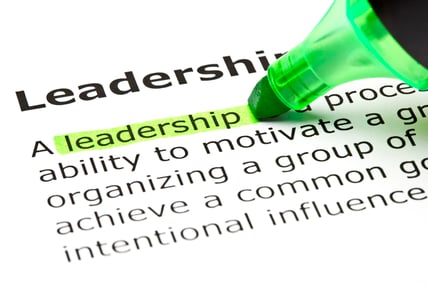[This is part 1 of a 3 part series on the evolution of leadership theory—the history, most recent thinking on the topic, and what to look for when trying to identify it, including a look at charisma, executive presence and their contributing roles to successful leadership]
___________________________________________________________
As retained executive search consultants, we are constantly interviewing and assessing executive talent for our clients. After interviewing these candidates, our clients often reference key characteristics they found (or didn’t) in an executive that are not found in their resumes—charisma, executive presence, or other purported leadership behaviors that are generally thought to be important to success.
But clients continue to ask questions about these traits that sit in the invisible spectrum. Is charisma an essential ingredient to leadership? If so, for all sizes and types of companies? Are there other types of leadership where charisma isn’t present and are they successful and in what types of circumstances? What about management versus leadership? How do we define the differences, and when is a manager better suited than a leader? And what’s up with “executive presence”? Is that just another term for leadership, or is it different? How? Are these differences important?
All great questions. And—although we won’t be able to answer them all here in appropriate depth and breadth—we’re going to try to lift the curtain a bit.
With the book and now movie, "Moneyball," the question of what to look for and what to measure in picking leaders for organizations should be rethought. In "Moneyball," the fulcrum of the book is based on a different way of measuring the potential and future performance of pro baseball players. In the book, the Oakland A's general manager turned upside down what had been considered the gold standard for sports talent assessment by baseball scouts in favor of a much less obvious and intuitive set of statistics. Pro baseball would never be the same.
So, adapting this concept, it's worth reviewing some popular (mis)perceptions of what makes a leader.
First principles—What does an organization need: Leaders or Managers?
Leaders/leadership by its own definition indicates the following situational characteristics—
Where one is now is not where one should be. Rather
1) One should "follow" someone or something to another place, in theory a "better place"
2) This "better place" is both NOT self-evident (convincing is required), AND
3) It requires effort to get there, and is not frictionless, calorie-free, or zero-cost.
Managers, on the other hand, are most often those who create efficient operating systems once the "better place" has been reached.
Charisma as an essential ingredient to successful leadership—True or False?
The world "charisma" comes from the Greek word for "gift." Charisma is better thought of as a skill that enhances leadership effectiveness by dint of a superior ability to influence others to change their initial positions, perspectives, or opinions.
I was first offered a deeper insight into the concept of charisma in leadership by the teachings of Rakesh Khurana, a professor at Harvard Business School. Dr. Khurana has done extensive research and writing on the topic, from articles in Harvard Business Review (“Curse of the Superstar CEO”, HBR 2002,) to complete books on the topic (Searching for a Corporate Savior: The Irrational Quest for Charismatic CEOs). More popular business authors like Jim Collins, author of Good to Great, wrote about “Level 5 Leadership” and addressed charisma in relation to this “top leadership level.” Collins has been quoted as saying, “Being charismatic and wrong is a bad combination,” and “I’d go so far as to say that [The Level 5 leaders Collins chronicled in the good-to-great success case studies in his book] were uncharismatic for the most part.”
Regardless of good or bad use of charisma, there is still a great deal of additional research and writing on the topic. Clearly we associate the effects of charisma with enhanced motivation, inspiration and intellectual stimulation it engenders in the listener. But can it be taught? One branch of research surrounds this argument. If you read the works of Professor Robert House at University of Pennsylvania's Wharton School, he deconstructs "how" charisma works. From House’s work, one could infer that charismatic behavior may be both "born in," but also taught with enough study and practice.
The Dangers of Charisma
What are the pitfalls of charisma in the corporate context?
• Charismatic executives tend to suppress individual thinking and leadership development in subordinate teams. Leaders with charisma can create a culture of "followers," rather than young, budding leaders and the next generation of a company's executive team. Narcissistic tendencies don't allow others to flourish instead creating dominant monolithic thinking, "I don't even argue with him anymore because I always lose."
• This in turn leads to challenges for succession planning. Often charismatic leaders leave a vacuum of next generation leaders, having created instead a strong set of followers.
• Life of the party isn't always "engine of achievement." Charisma can be used to achieve personal goals as the primary objective, at the expense of organizational goals. There is no question it is always best to have alignment of personal and organizational goals so that by achieving one, the other is also achieved. However, this mandates that the charismatic leader be programmed to strive for a "win-win," vs. a "win-lose." In fancy organizational behaviorist language, this ends up being the difference between those leaders who have "higher activity inhibition" and those who have lower levels. If a leader has lower activity inhibition, they tend to seek win-lose outcomes with the “win” side being the individual over the organization.
What can the charismatic leader do to counteract negative repercussions?
The charismatic leader needs to ensure that they either surrounds themselves with others who have strong self-confidence and ideation, or that the charismatic leader makes a great deal of effort to cultivate an environment open to sharing other opinions, perspectives, and ideas rather than defaulting to "the charismatic boss."
As referenced earlier, charisma is really more situationally valuable. Typically, charisma is most valuable when change is the goal. Innovation, revolution, new paradigm adoptions are the best projects for the charismatic toolbox.
Some popular examples of positively and negatively directed charisma include the following:
Good = Sir Ernest Shackleton, and the failed Antarctica expedition he saved | John F. Kennedy | Martin Luther King
Bad = Hitler |Jim Jones and the 909 deaths in the Jonestown massacre in 1978 where Jones as dogmatic cult leader got all his followers to commit mass suicide
A few additional interesting links to resources on charisma and leadership
http://money.cnn.com/magazines/fortune/fortune_archive/1996/01/15/207161/index.htm [lighter reading]
http://www.aom.pace.edu/amj/february2001/waldman.pdf [heavier reading]






